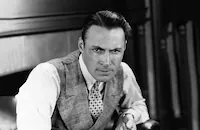Our Modern Maidens

Brief Synopsis
Cast & Crew
Jack Conway
Joan Crawford
Rod La Rocque
Douglas Fairbanks
Anita Page
Edward Nugent
Film Details
Technical Specs

Synopsis
Billie Brown and Gil Jordan are two jazz age youngsters who get married. After Billie persuades a reluctant friend, Glenn Abbott, to get Gil a diplomatic post in Paris, she and Gil wed in elaborate style. All is well until Billie discovers Gil's affair with a girl named Kentucky. Giving them good wishes, she leaves her husband. Sometime later in France, she and Abbott meet again, are drawn to each other, and end the film hand in hand.

Director

Jack Conway
Cast

Joan Crawford

Rod La Rocque

Douglas Fairbanks

Anita Page

Edward Nugent

Josephine Dunn
Albert Gran
Crew

Photo Collections
Videos
Movie Clip




Film Details
Technical Specs

Articles
Our Modern Maidens
Already engaged as Our Modern Maidens was being shot, Crawford and Fairbanks had adjacent dressing rooms and had a special whistle to announce their presence to each other. They also took to speaking a special form of "pig Latin" that no one else could understand. After the movie was completed, the pair placed their footprints in cement at Grauman's Chinese Theater. Then they were off to their wedding in New York City on June 3, 1929. (The marriage ended in divorce in 1933.)
Our Modern Maidens, Crawford's final silent film, was a follow-up to her star-making vehicle, Our Dancing Daughters (1928), which also co-starred Page. A third entry in Crawford's "Jazz Baby" series, Our Blushing Brides (1930), led one wag of the day to wonder whether a fourth film might be called Our Dizzy Divorcees. The successful series propelled Crawford into superstardom with her projection of what one reviewer of Our Modern Maidens described as "the hard, ultra-modern, world-weary girl so prevalent in our contemporary life."
Producer: Jack Conway, Hunt Stromberg (uncredited)
Director: Jack Conway
Screenplay: Marian Ainslee, Ruth Cummings, Josephine Lovett
Cinematography: Oliver Marsh
Art Direction: Cedric Gibbons
Original Music: Arthur Lange, William Axt (uncredited)
Editing: Sam Zimbalist
Costume Design: Adrian
Principal Cast: Joan Crawford (Billie Brown), Rod La Rocque (Glenn Abbott), Douglas Fairbanks Jr. (Gil Jordan), Anita Page (Kentucky Strafford), Josephine Dunn (Ginger ) Edward Nugent (Reg).
BW-76m.
by Roger Fristoe

Our Modern Maidens
Quotes
Trivia
Joan Crawford married her co-star Douglas Fairbanks Jr. in a well orchestrated publicity event for the film.
Miscellaneous Notes
Released in United States 1929
Sequel to "Our Dancing Daughters" (1929) directed by Harry Beaumont.
Released in United States 1929













